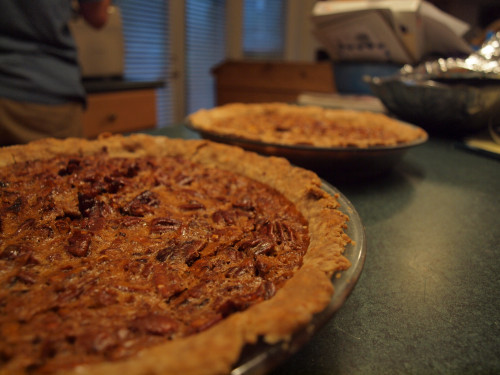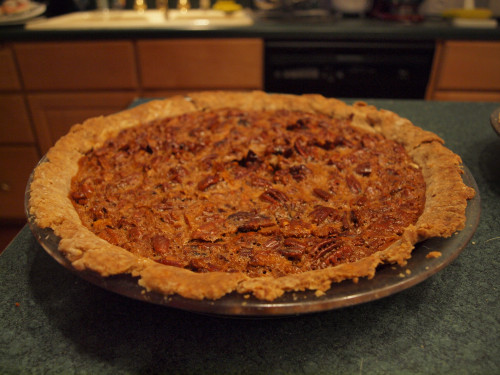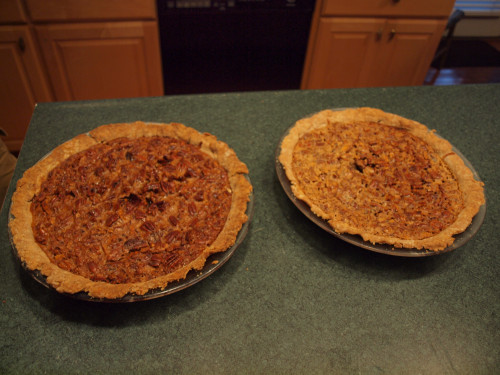Making a pecan pie can be a trying experience. On the one hand, the succulent, butterscotch flavor makes the filling irresistible. On the other hand, four cups of corn syrup contributes to a very sticky situation. The filling of a traditional pecan pie includes a startlingly small number of ingredients: corn syrup, brown sugar, eggs, butter, pecans, and butterscotch chips. For this specific pie, I decided to make two, doubling the recipe and bringing a pie to some friends. Doubling the recipe required an entire bag of Hershey’s butterscotch chips. I unceremoniously dumped the entire bag into the lazily bubbling corn syrup and brown sugar concoction. Seven minutes passed (the recipe instructed to wait seven minutes for the chips to melt), and half the chips appeared intact. Fourteen minutes had passed and the chips had conglomerated into a sticky, delicious, butterscotch mess floating on top of liquid corn syrup.
With some vigorous stirring, I managed to melt all the chips and everything seemed fine and dandy. Little did I know that in the oven, my crust had accumulated a spiderweb of tiny fractures while pre-baking. I thought, this should be no problem. I whipped out my trusty egg white wash and sealed the cracks. Little did I know that as I poured the filling into the crust the hot liquid was melting away my critical improvised sealant.
Fast forward forty-five minutes. I took the pies out of the oven and to my dismay, I glimpsed a thin layer of filling, solidified under the bottom crust, binding the pie to the pan. Not to mention the fact that one pie had a lighter brown color than the other pie, due to the fact that I had placed one pie on the top rack and one on the bottom. Luckily, this interesting quirk of heat distribution did not affect the flavor, just the carmelization on top.
As I tried to slice the pie and serve it, my spatula met odd resistance and unfortunately, the bottom crust refused to budge. My pecan pie eventually turned out more like a pecan cobbler. The pie tasted amazing and my crust was the best I had made yet, just a few too many cracks let the filling through. Even one misplaced crack could have sealed my pie’s fate.
Lessons I learned:
1) Let the filling cool off a bit before pouring, to preserve the integrity of the egg wash.
2) Make sure the dough has more moisture, to prevent excessive cracking during pre-baking.
3) Be patient with the filling. When doubling the recipe, I should have expected double time.
Pictures of the finished product:
 Lessons learned, on to the next one…
Lessons learned, on to the next one…
–Through the lens of the Ocular Omnivore


